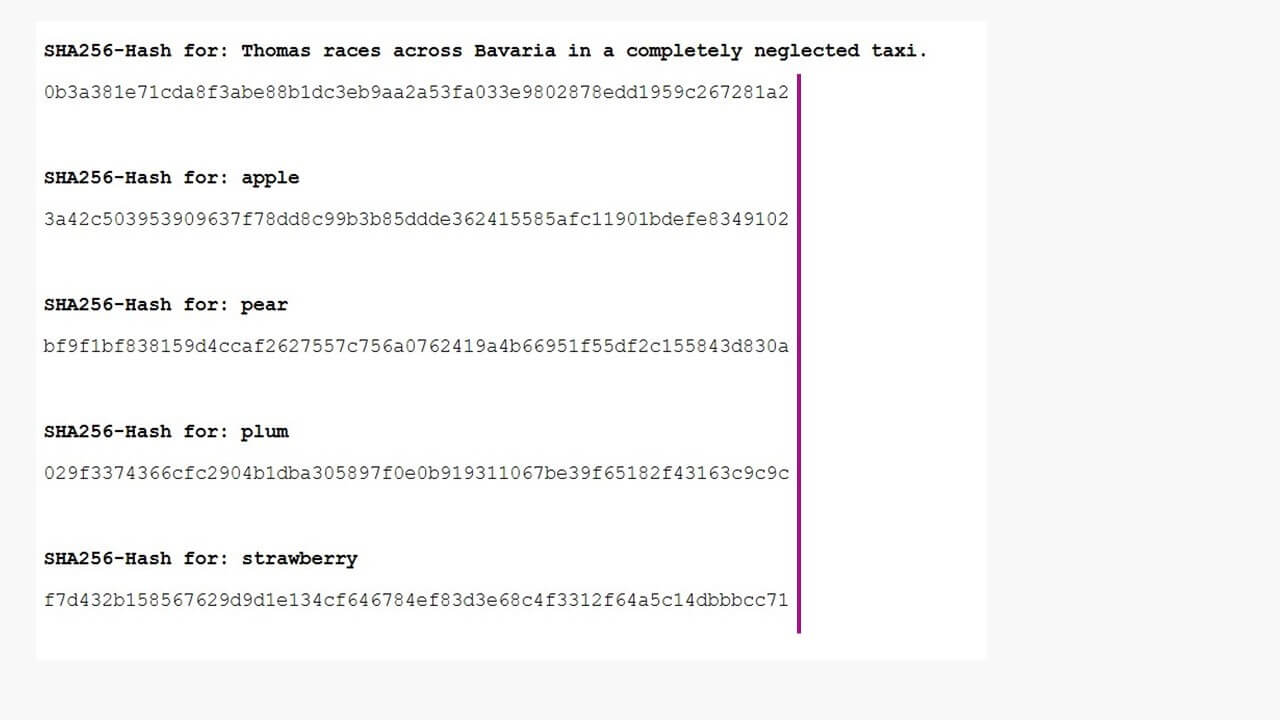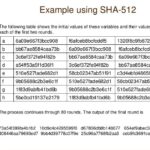In the digital landscape, hash functions hold an enigmatic power, serving as the guardians of data integrity and authenticity. As we delve into the concept of hash lengths, we unravel a complex tapestry woven with threads of security, performance, and cryptographic fidelity. Hash lengths, which refer to the fixed size of the output produced by a hash function, come in various forms—each with its own implications and significance. Understanding why there are so many hash lengths and what they mean involves exploring the technical intricacies while also reflecting upon a larger, spiritual context.
The essence of a hash function lies in its ability to take an input (or “message”) and return a fixed-length string of characters, which is typically represented in a hexadecimal format. This output, or hash value, is unique to that particular input, akin to a digital fingerprint. When we consider the myriad of hash lengths available—ranging from 128 bits to 512 bits, or even longer—the question arises: why this variation? What does it signify for our understanding of security in a world increasingly reliant on digital transactions?
At its core, the different lengths of hash outputs represent a diverse array of security capabilities. Shorter hashes—such as those produced by MD5 with a length of 128 bits—are often faster to compute but are more susceptible to vulnerabilities. These shorter lengths can be likened to the fragile promises of humans; while they may be quickly forged and easily accessible, they can also be readily broken. This concept resonates with biblical teachings, such as in Ecclesiastes 4:12, which suggests that a threefold cord is not quickly broken. Analogously, a longer hash length possesses greater complexity and resilience, akin to the strength of deeper, more enduring commitments found in scripture.
The 160-bit hash length of SHA-1, although once heralded as secure, has demonstrated weaknesses over time, leading to its gradual phasing out in favor of more robust alternatives. This gradual realization mirrors the Christian journey toward maturity; as believers grow in faith, they seek deeper revelations and truths rather than contentment with surface-level understandings. The transition from SHA-1 to SHA-256 and beyond signifies not only an evolution in cryptographic practice but also a call to spiritual growth and the pursuit of higher standards during our quest for truth.
The extensive hash lengths, particularly those exceeding 256 bits, such as SHA-512, epitomize a fusion of security and computational efficiency. Greater lengths provide an exponential increase in possible combinations, thus fortifying the likelihood of secure data transmission. This notion resonates profoundly with the promise found in Psalm 46:1, where God is described as a refuge and strength, a very present help in trouble. Just as a strong fortress protects against adversaries, longer hash lengths guard against potential breaches in data integrity.
The diversity in hash lengths also leads to implications concerning performance. Longer hash functions usually require more computational power, which may result in slower processing times. Yet, as we navigate through electronic communications, it becomes pertinent to balance the dichotomy between the need for security and the pursuit of efficiency. The parable of the talents (Matthew 25:14-30) exemplifies this balance, where the prudent stewardship of resources yields a fruitful return. In the context of cryptography, it challenges us to utilize the right length of hash functions to ensure both security and efficiency—much like the prudent servant using his talents wisely.
In Christian thought, the symbolism of numbers carries profound significance. Hash lengths are no exception. The number 256, associated with SHA-256, resonates with the divine in mathematics and completion. The precision found in a 256-bit hash can be compared to the completeness of God’s creation, as articulated in Genesis 1:31, where God proclaimed His creation as “very good.” Thus, the hash lengths provoke reflections on perfection and fullness in the grand design of our lives, challenging us to seek integrity in our digital footprints as well.
Exploring the pastoral implications, one may ponder the importance of accountability in our interactions—both virtual and real. As hash lengths imbue a sense of responsibility for data integrity, they echo the biblical call for accountability among believers in a community. This comes to light in Hebrews 10:24, prompting us to consider how our digital practices align with our values. The call to transparency and truth is similarly echoed within cryptographic principles, as we seek trustworthy means of verification in all that we engage with online.
Moreover, the interplay between security and vulnerability is encapsulated in hash lengths. While longer hashes offer protection, they cannot alleviate every risk; the human element still plays a significant role. It reflects on Proverbs 3:5-6, instructing us to trust in the Lord’s wisdom rather than solely relying on our understanding. Thus, even in the perplexity of technical security, a reliance on divine guidance ultimately shapes our digital behavior and engagements.
In conclusion, the multitude of hash lengths serves not only as a technical mechanism but also as an evocative symbol reflective of deeper spiritual truths. Security, maturity, accountability, and integrity are interwoven through the lens of cryptographic practices, drawing parallels to foundational Christian principles. Our exploration of hash lengths offers an avenue for introspection—encouraging us to embrace complexity while fostering an awareness of our engagements in a world increasingly defined by the digital narrative. In understanding these processes, we may shift our perspectives and cultivate a deeper curiosity about the intersection of technology and faith.








Leave a Comment